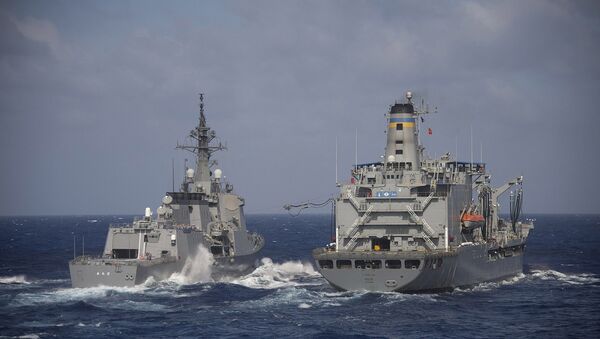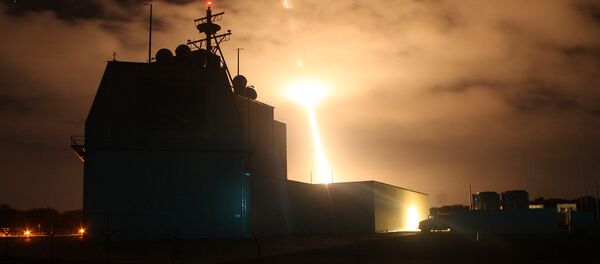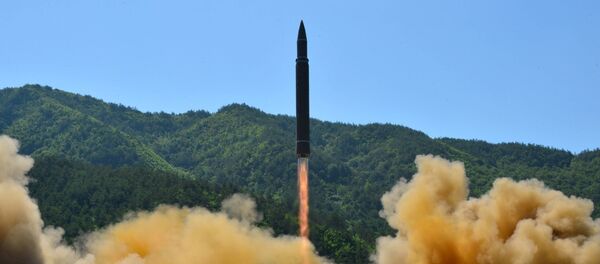The destroyer JS Atago of the Japanese Maritime Self-Defense Force shot down a dummy missile fired from the Pacific Missile Range Facility at Barking Sands, Kauai, Hawaii, on Tuesday, a statement by the US Missile Defense Agency (MDA) reported the following day.
The Japanese warship detected and tracked the missile, then "developed a fire control solution, and a Standard Missile-3 missile was launched," the statement said, according to the Washington Examiner.
"The SM-3 successfully intercepted the target above the Pacific Ocean," the statement said, "a significant milestone in the growing cooperation between Japan and the US in the area of missile defense."
"This successful test is a major milestone verifying the capabilities of an upgraded Aegis BMD [ballistic missile defense] configuration for Japan's destroyers," MDA Director Lt. Gen. Sam Greaves said, according to Defense News. "This success provides confidence in the future capability for Japan to defeat the developing threats in the region."
The Atago, lead ship of her class of the same name, is similar in capabilities and appearance to the US Navy's Arleigh Burke-class guided missile destroyers. Together with the four Kongo-class destroyers, Japan has six ships equipped with the Aegis Combat System.
Defense News noted that the US Navy has been pushing for Japanese missile defense to be moved to Aegis Ashore sites instead of being dependent on sea-based systems, so that it can use its ships for other purposes. While the ship-based Aegis system is much older and more well-proven, an Aegis Ashore system is presently operating in Romania and Poland, and the Japanese Self-Defense Forces are eager to implement both versions of the system.
In late July, Sputnik reported that the Japanese Defense Ministry had set aside as much as $2.2 billion more for the system, promising an increase of its previous budget by 20 to 30 percent. Two systems are already in the process of being deployed in the northwest and southwest of the island nation, for an estimated cost of $890 million.
Aegis has had a stellar missile defense record, with 38 of of 47 tests being deemed successful according to the MDA, including Tuesday's test.
That said, a January test of the same missile — SM-3 Block IIA — by US and Japanese forces failed to lock on to an incoming mock missile during a test also performed off the coast of Hawaii, Sputnik reported at the time.
However, a report published by the Los Angeles Times in 2017 about another missile defense system used by the US, the Ground-based Midcourse Defense (GMD) system. That report revealed that, not only have many of the missile thrusters failed during simulation testing, causing the interceptor to stray from its flight path, but also that top GMD contractors have glossed over the issue, insisting that the simulations have been successful, Sputnik reported.
Reuters noted that while countries such as Russia have expressed concern about Japan fielding the Aegis system in greater capacity, since it can be used for both offensive and defensive purposes. Japan insists its systems are for self-defense only.




